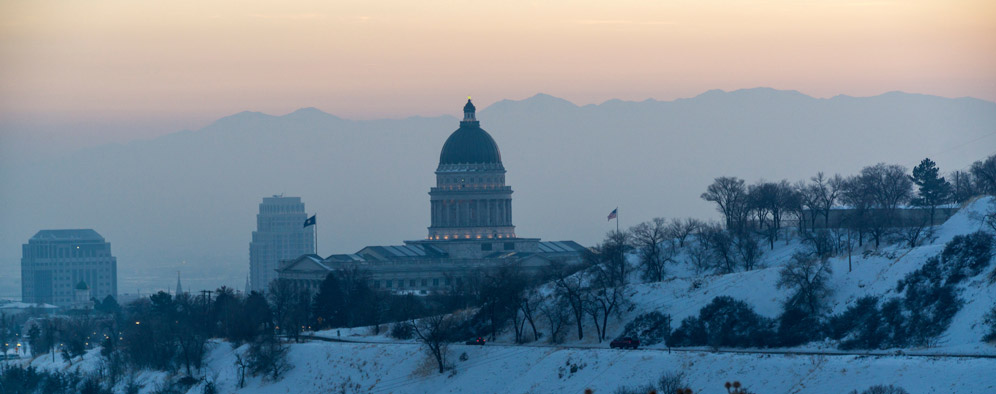
Orginally posted on @theU on February 19, 2019.
By Myron Willson, Deputy Chief Sustainability Officer
The inversion season is upon us. This can be a time to point fingers at other polluters, but it should also be a time to recognize our own contributions to the murky haze and examine what steps we are taking to reduce emissions, including those emissions created by our actions at work and school.
So, what is our own university doing to reduce emissions? The university (health sciences and lower campus) is often likened to a small city with the total population of faculty, staff and students exceeding 60,000. This means that we have a fairly significant potential for creating emissions.
Fortunately, in addition to supporting faculty who are conducting research on various aspects of air quality and its impacts, the university is also proactively identifying areas for emissions reductions. In 2014, leadership authorized the first universitywide emissions review resulting in a report that provided recommendations for infrastructure and operational changes. Some areas identified:
- Efficiency improvements and controls for large natural gas-powered boilers for building heat and hot water
- Emergency diesel generator replacement
- Phasing out dirty gas-powered landscaping equipment and replacing with electric options
- Reducing and controlling chemicals and solvents used in laboratories, shops, etc.
- Increasing sustainable commuting (including bicycles, public transit and car sharing)
As resources have allowed, many of these recommendations have already been implemented. Numerous changes have been driven by the dedicated staff in facilities’ Sustainability and Energy Management Office, Planning Design and Construction, Commuter Services, as well as the Occupational and Environmental Health and Safety Office. At this point, nearly 50 percent of the recommendations have been or are being addressed.
- Many equipment upgrades have been completed at the central heating plant and operation has been optimized for efficient fuel use.
- The landscaping team is investing in the electrification of equipment and has implemented a moratorium on gas-fired equipment on yellow and red AQ days.
- The “Better-Buildings Challenge” has been fully funded and will result in a 20 percent reduction of energy use per square foot by 2020.
- Based on feedback from the Sustainability Office, the Clear the Air Challenge has shifted from July to February to include students among other campus commuters.
- A full-time active transportation manager position has been established along with funding for infrastructure changes to support non-vehicular transport.
These actions are netting results. Even as the campus has grown (both in numbers of students and building square footage) total emissions have nearly leveled out or decreased. Close to 50 percent of our faculty, staff and students come to campus each day in something other than a single-occupant vehicle (making us very competitive with other Pac-12 institutions according to the latest reports).
Recent building projects on campus, such as Gardner Commons, have been designed to produce minimal emissions as the systems for heating and cooling are electric. Almost no on-site emissions are created. In addition, as the university continues to increase its purchase of renewable electricity (geothermal and solar), emissions due to the operations of buildings like Gardner Commons will be nearly zero.
Going forward, new federal and state requirements for business and institutions related to air quality are likely to become more restrictive. University leadership has asked staff to review the 2015 Air Quality Task Force Report, provide recommendations for further reductions and lead the way in reducing emissions. Stay tuned for an update.
These are all reasons for optimism. So, on days when our air isn’t fit to breathe and we make a conscious choice to reduce our own emissions, we can rest assured that the university is doing its part too.
Throughout February, take action on air quality by tracking your commute behaviors with the Clear the Air Challenge, a statewide competition that aims to reduce emissions from vehicles by promoting alternative transit options. Join the U team at travelwisetracker.com/s/university-of-utah.
